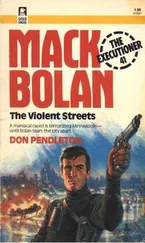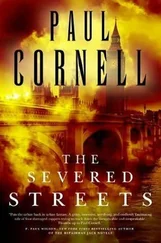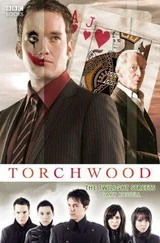But whatever the reasons for D’Addario’s distance from the investigation, Edgerton understands that the effect is the same: He is on the longest possible leash. As a result, Andrea Perry will not become Latonya Wallace, just as Edgerton will not become another Pellegrini. Good-bye to the detail officers, to the FBI psych profiles, to the aerial photographs of the crime scene, to a hundred endless debates among a full squad of homicide detectives. Instead, this child’s murder will be one man out in the street, with time enough and room enough to solve his murder. Or, perhaps, hang himself.
Whichever comes first.
It is a beautiful courthouse, truly impressive in its classical form. The bronze doors, the varied Italian marbles, the deep redwoods and gilded ceilings-the Clarence M. Mitchell Jr. Courthouse on North Calvert Street is a work of great architecture, as fine and glorious as any structure ever built in the city of Baltimore.
If justice itself were measured by the grandeur of its house, then a Baltimore detective would have little to fear. If well-cut stone and hand-carved woods could guarantee a righteous vengeance, then the Mitchell Courthouse and its companion across the street-the old post office building now known as Courthouse East-might be places of sanctuary for a Baltimore law officer.
The city fathers spared little when they created these two exquisite buildings in the heart of downtown, and in the last several years their descendants have been equally generous in their ongoing effort to renovate and preserve the beauty of both structures. From the arraignment courts to the jury rooms, from front lobbies to back corridors, the courthouse complex exists so that generations of law officers and lawyers could walk the halls of justice and feel their spirits soar. Stepping lightly down the restored portico of the post office building, or walking into the elegance of Judge Hammerman’s paneled palace, a detective has every reason to hold his head high in the knowledge that he has arrived at a place where society can exact its price. Justice will be done here; all the hard, dirty work performed in the city’s rotten core will no doubt be gracefully shaped into a clean and solemn judgment of guilty. A jury of twelve respectable, thoughtful men and women will rise as one to render that verdict, imposing the law of a good and valiant people on an evil man.
So how is it that every Baltimore detective of this epoch enters his courthouse with his head down, his badge drawn with practiced boredom for the sheriff’s deputies who man the metal detector in the first-floor lobby? How can those detectives step so heavily toward the elevators, oblivious of the beauty all around them? How can they crush their cigarette butts into the stone with such seeming indifference, then knock on a prosecutor’s office door as if it were the very gate of purgatory? How can a homicide detective bring his best work to this, his final destination, wearing a look of utter resignation?
Well, for one thing, he’s probably been up all night working two fresh shootings and a cutting on the midnight shift. No doubt the same detective scheduled to testify in Bothe’s court this afternoon just finished his overnight paperwork in time to listen to a dayshift’s roll call. No doubt he then spent another hour downing four cups of black coffee and an Egg McMuffin. Now he’s probably lugging paper evidence bags from the ECU to some lawyer’s cubbyhole on the third floor, where he will be informed that his best witness hasn’t yet shown up for court and isn’t answering a sheriff deputy’s phone calls. Beyond those worldly concerns, this same detective-if he knows his business-is obligated to arrive in the legal arena with a mind clouded by something other than transcendent visions of moral victory. In his heart of hearts, a veteran detective is inspired not by the glories of the courthouse, but by Rule Number Nine in the lexicon, to wit:
9A. To a jury, any doubt is reasonable.
9B. The better the case, the worse the jury.
And, in addition to rules 9A and 9B:
9C. A good man is hard to find, but twelve of them, gathered together in one place, is a miracle.
A detective who ventures into the corridors of justice with anything less than a firm and familiar skepticism for the American legal process is a man leaning into the punches. It’s one thing, after all, to see some of your best work torn to shreds by twelve of Baltimore’s finest citizens, but it’s another thing entirely to watch it happen from a state of naive incredulity. Better to check your expectations at the courthouse doors and enter its glistening corridors in full, willful anticipation of the debacle to follow.
The rock-and it’s a fine, honorable rock-upon which our legal system is built states that a defendant is innocent until found guilty by the unanimous vote of a dozen peers. Better that a hundred guilty men should walk free before one innocent man is punished. Well, by that standard, the Baltimore court system is pretty much working to code.
Consider: In this particular year in the life of Baltimore’s criminal justice system, the names of 200 perpetrators will be brought to the state’s attorney’s office in connection with 170 solved homicides.
Of those 200 suspects:
Five cases will still be pending trial two years later. (In two of those instances, suspects were charged in warrants but never apprehended by detectives.)
Five will die before trial or in the course of arrest. (Three of these are suicides, one the victim of a fire she set to kill someone else, one the victim in a police shootout.)
Six will not be tried when prosecutors determine the killings to be justifiable by self-defense or a result of accidental causes.
Two defendants will be declared not criminally responsible and sent to a state mental hospital.
Three defendants age sixteen and younger will have their homicide charges remanded to juvenile court.
Sixteen will have their charges dismissed prior to indictment due to lack of evidence. (On occasion, an aggressive homicide detective with insufficient evidence to prove a case will play a long shot and nonetheless charge his best suspect in the hope that the incarceration will provide sufficient leverage to provoke a confession in subsequent interrogations.)
Twenty-four defendants will have their charges nol prossed or stetted by prosecutors after indictment. (A nol prosse represents the unequivocal dismissal of a grand jury indictment; a stet places the case on an inactive docket, though the prosecution can be revived within a year if additional evidence is forthcoming. In time, most stet cases become dismissals.)
Three defendants will have their charges dismissed or stetted when it becomes clear that they are, in fact, innocent of the crimes for which they have been accused. (The innocent-until-proven-guilty standard does indeed have some real meaning in Maryland’s largest city, where it’s not uncommon for the wrong man to be charged or even indicted for a violent crime. It happened, for example, in the shooting of Gene Cassidy, and it happened again in three separate murders handled by detectives on Stanton’s shift. In those cases, the wrong man was charged as a result of faulty witness identifications-one from the dying victim, the other two from bystanders-and the defendants were subsequently cleared through additional investigation. Charging the wrong man on mediocre evidence is not difficult, and getting a grand jury to indict him is only a little harder. But after that, the chances of putting the wrong man into prison become minimal. It is, after all, hard enough for prosecutors in Baltimore to convict the guilty; the only scenario by which an innocent man could be successfully prosecuted on weak evidence would be one in which a defense attorney failed to evaluate the case and force-fed a plea to a client.)
Читать дальше












